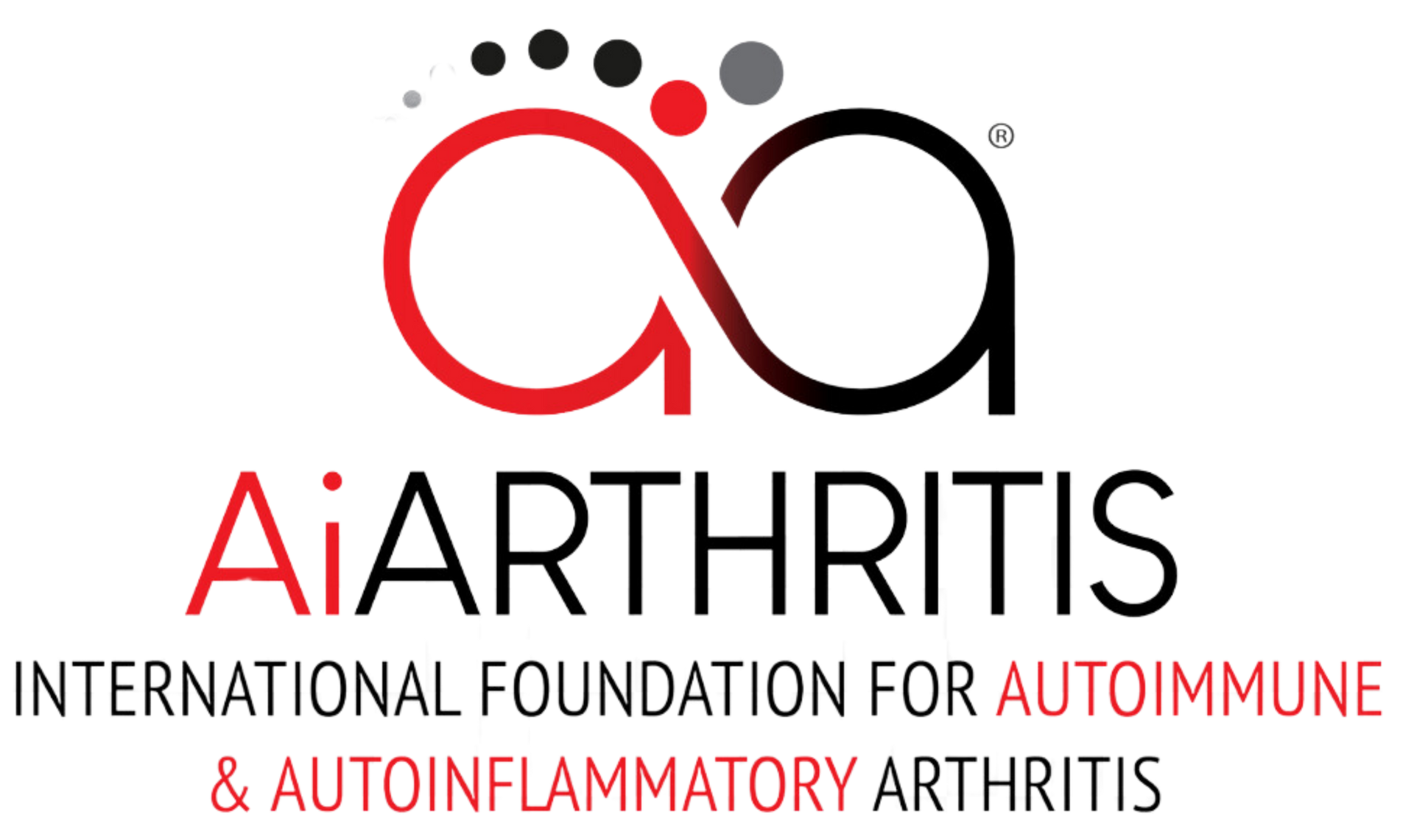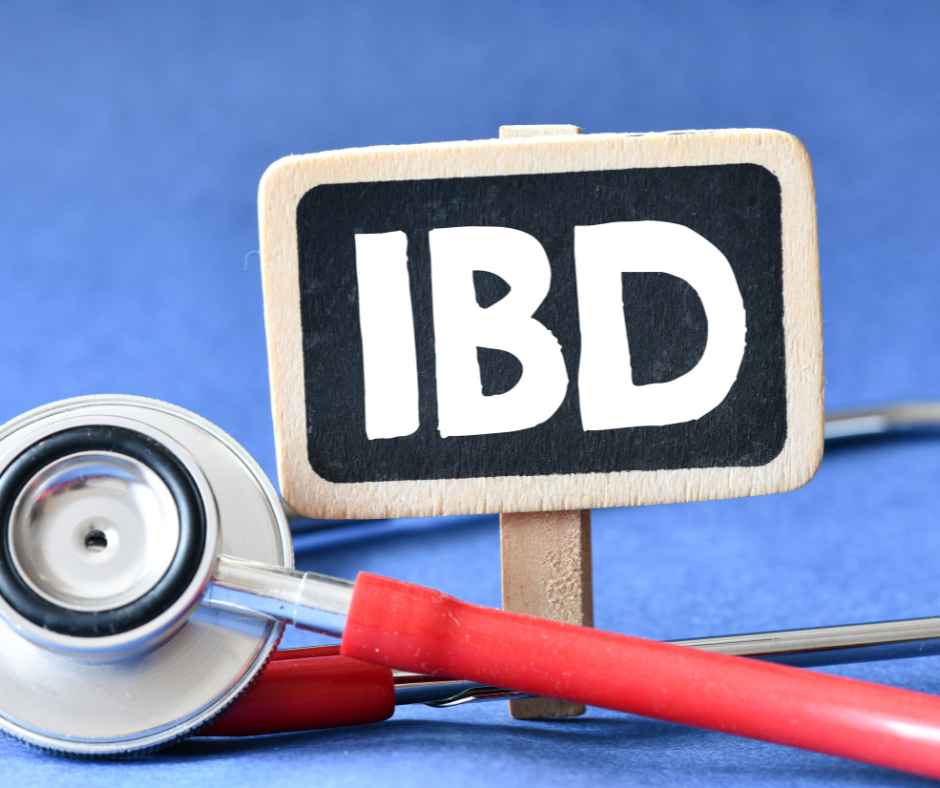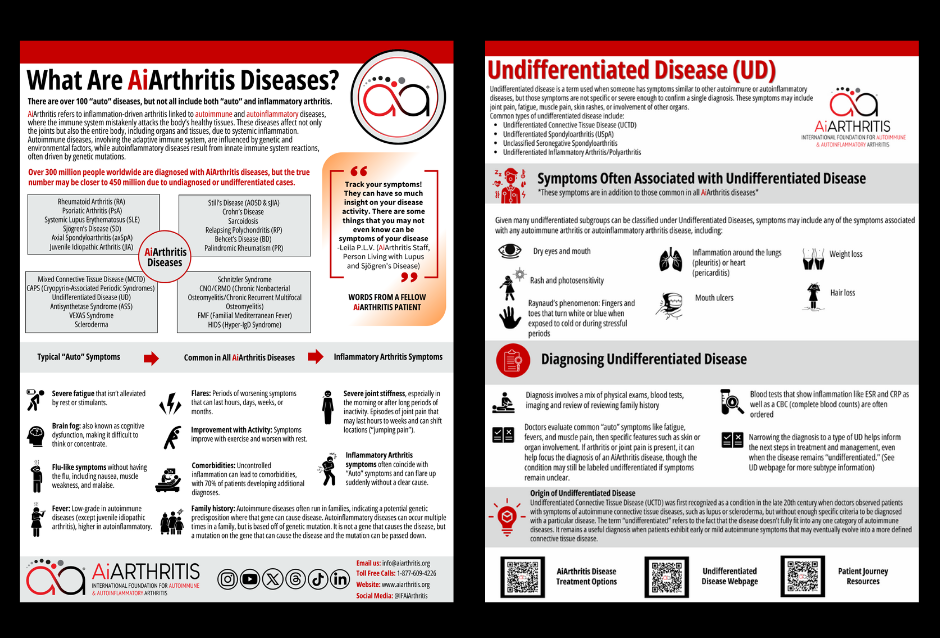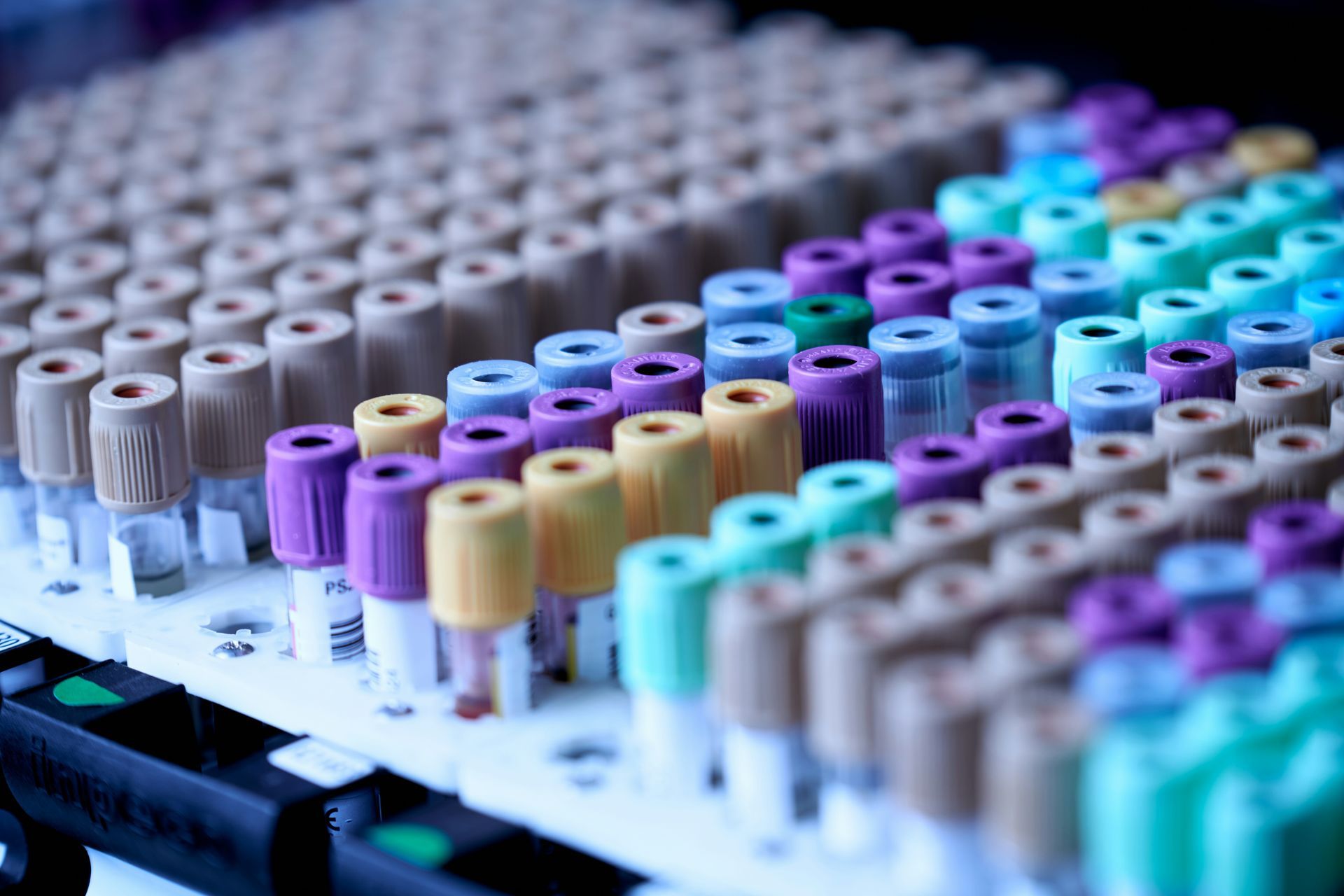May 19: World IBD Day
AiArthritis Disease Symptoms
AiArthritis diseases share common features such as flares, where symptoms worsen for hours to months, and improvements with physical activity, while rest can make symptoms worse. Genetic predisposition or mutations can lead to these conditions running in families, and uncontrolled inflammation often results in comorbidities, affecting 70% of patients.
Key symptoms include:
- Severe fatigue that persists despite rest or stimulants
- Brain fog, making concentration difficult
- Flu-like sensations like nausea and muscle weakness
- Low-grade fevers (higher in autoinflammatory diseases)
- Joint stiffness, especially in the morning or after long periods of inactivity
- Sudden, shifting joint pain that starts and stops abruptly
Symptoms of Crohn’s Disease:
- Persistent diarrhea
- Abdominal pain and cramping
- Blood in your stool
- Mouth sores
- Reduced appetite and weight loss
- Urgent need to move bowels
- Delayed growth and development in children
- Eye complications: redness or pain in the eyes, or vision changes
- Skin complications: bumps, sores, or rashes
- Loss of normal menstrual cycle
- Osteoporosis
- Kidney stones
Learn More About Crohn's Disease
Joint Pain and Crohn’s Disease: An Overlooked Connection
Crohn’s disease is a chronic autoimmune condition that primarily affects the gastrointestinal (GI) tract, causing inflammation, abdominal pain, diarrhea, and fatigue. However, the inflammation isn’t confined to the GI system—it can extend to other parts of the body, including the joints. Up to 25% of people with Crohn’s disease experience joint pain, which may occur in one of two forms:
- Peripheral Arthritis: Inflammation in joints like the knees, ankles, elbows, or wrists, often correlating with intestinal flare-ups. This type of arthritis tends to improve as Crohn’s disease comes under control.
- Axial Spondyloarthritis: Chronic inflammation of the spine and sacroiliac joints (similar to ankylosing spondylitis), which may persist independently of GI symptoms. It can cause stiffness, pain, and reduced mobility.
Joint pain associated with Crohn’s can range from mild discomfort to debilitating inflammation, significantly impacting quality of life. It highlights the systemic nature of IBD and the importance of multidisciplinary care.
Challenges in Diagnosing and Managing Joint Pain
The relationship between Crohn’s disease and joint pain often complicates diagnosis and treatment:
- Delayed recognition: Patients may not connect their joint symptoms to Crohn’s disease, and healthcare providers might focus exclusively on GI issues.
- Overlapping conditions: Joint pain may stem from Crohn’s-related inflammation or separate conditions, such as osteoarthritis or fibromyalgia.
- Impact on mobility: Persistent joint pain can make physical activity difficult, exacerbating fatigue and emotional distress.
Addressing joint pain requires coordinated care between gastroenterologists and rheumatologists to ensure comprehensive treatment.
Discover More Of Our Resources
Advocacy and Research for Crohn’s Disease and Joint Pain
World IBD Day emphasizes the need for:
- Expanded research funding to explore the mechanisms linking Crohn’s disease to joint pain and develop targeted therapies.
- Improved education for healthcare providers to recognize and treat extra-intestinal manifestations like joint pain.
- Support networks that empower individuals with Crohn’s disease to advocate for better care and share their experiences.
Raising awareness about the systemic nature of Crohn’s disease fosters understanding and encourages multidisciplinary approaches to care.
How You Can Support
World IBD Day
On May 19th, there are many ways to help spread awareness about Crohn’s disease and its joint-related complications:
- Share information on social media, highlighting the link between IBD and joint pain using hashtags like #WorldIBDDay and #IBDawareness.
- Participate in events organized by advocacy groups or local health organizations.
- Donate to research initiatives focusing on innovative treatments for Crohn’s disease.
- Wear purple to show solidarity with the IBD community.
A Call to Action
World IBD Day is a chance to amplify the voices of individuals living with Crohn’s disease and shed light on the lesser-known challenges, like joint pain. By fostering awareness, supporting research, and advocating for multidisciplinary care, we can work toward a future where IBD patients have access to better treatment options and the opportunity to live more comfortable lives.
Tune into the
AiArthritis Voices 360 Talk Show, where patients, doctors, and advocates come together to discuss the latest in autoimmune and autoinflammatory arthritis. Join the conversation to learn, share, and make a difference in the world of arthritis care!
Related Blog Posts
November 29, 2025
Having multiple health conditions when living with an AiArthritis disease is not uncommon, discover why and what conditions are common.
July 16, 2025
Learn more about World Sjögren’s Day.
June 26, 2025
Discover more about Chronic Disease Awareness Day and why it matters.
Show More









